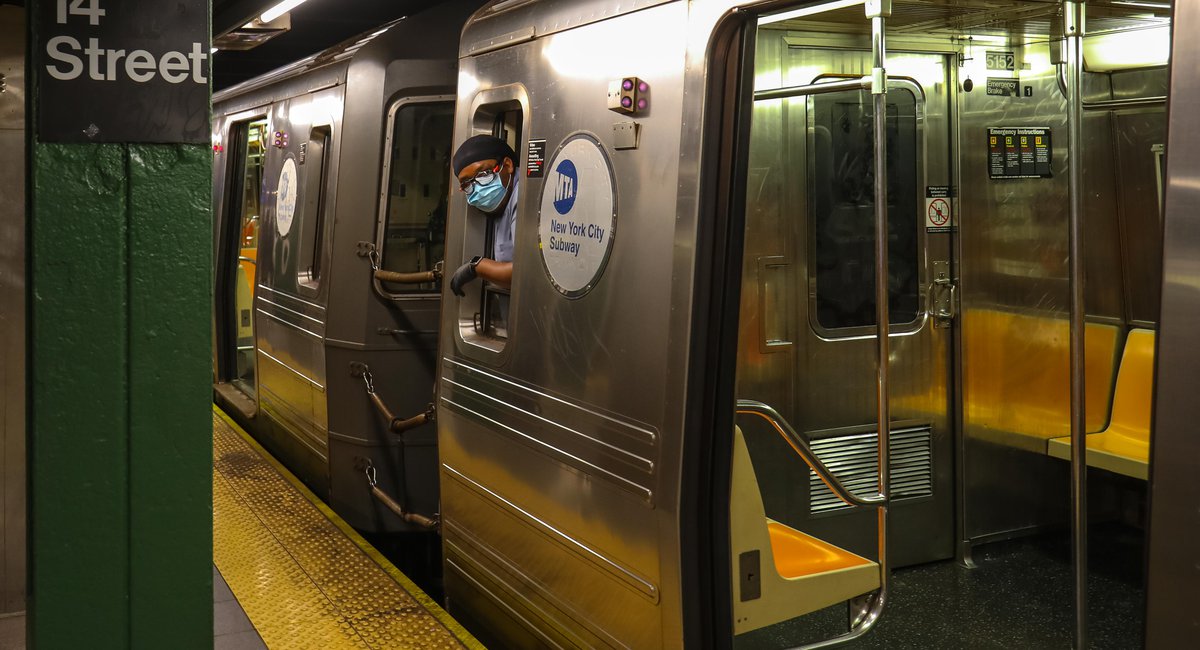Uncategorized
Mayoral Candidates Are Talking About City Takeover Of The Subway — The Idea Has Merit – Gothamist
http://gothamist.com/news/mayoral-candidates-are-talking-about-city-takeover-of-the-subway-the-idea-has-merit

The idea of the city wresting control of the subways from the state-run MTA is something plenty of aspiring mayors have used to launch their campaigns.
Former mayoral candidates Christine Quinn and Anthony Weiner proposed it in 2013. Candidate Joe Lhota suggested taking over the more lucrative departments of the MTA; the tolling on city bridges and tunnels. And when it still seemed possible that City Council Speaker Corey Johnson might run for mayor, he pledged to do it in his 2019 State of the City speech.
Most current mayoral candidates have expressed skepticism about the city taking over the subway amid a fiscal crisis – during a forum on January 25th, Scott Stringer said it was “not practical” for the city to take on the debt service. Andrew Yang, however, is in favor of the lofty, yet excruciatingly complicated proposal. At the same forum, Yang deviated from the other candidates, arguing that while the numbers “aren’t pretty… it’s hard to get the city back on its feet if the biggest artery is not in your control.”
“In a vacuum, it’s not a bad idea. It’s good in that it always indicates a mayoral candidate is at least interested in the transit system,” Nicole Gelinas, a senior fellow at the Manhattan Institute, told Gothamist. “But it kinda falls apart when you get into New York’s very complex political economy.”
One point that is pretty easy to grasp: the subway doesn’t pay for itself. Fares cover about half of the $17 billion in annual operating expenses. And they don’t even make a dent in the capital costs. The MTA relies on the ability of Albany to levy a variety of taxes on all New Yorkers to pay for the MTA. Everything from the commuter transportation mobility tax, gas tax, to the more recently passed Internet sales tax, and mansion tax.
“You can’t really run the subway system without all these sources of taxes,” Gelinas said. “The only way you could say this [mayoral control of subways] seriously, would be in a bid to reform New York City’s property tax structure and give the subway system a very large percentage of the property tax take.”
While the MTA remains a state agency, state legislators from around New York, many of whom rarely use the subway, retain a great deal of control over the system and have an interest in maintaining that control.
“Just at this week’s state legislative hearing on the MTA’s budget, legislators from across the state were urging the MTA to use more upstate vendors for their capital plans. This includes major railcar manufacturers like Bombardier in Plattsburgh,” Rachael Fauss, with the good government group Reinvent Albany, wrote in a statement. “While municipal control of the subways may be politically appealing, the state funding and interest in MTA capital spending would be difficult to untangle and it is unlikely that Governor Andrew Cuomo would totally cede control given his micromanagement of the agency.”
The MTA declined to comment. Governor Cuomo’s office didn’t respond to email for comment, nor did Mayor Bill de Blasio’s office.
Speaker Johnson, who is a strong proponent of mass transit, backs the Fair Fares program, and has favored mayoral control of the subways, said now is not the time to make wholesale changes to such a complicated system.
“I strongly believe in municipal control of subways and buses. It just makes sense,” Johnson wrote in a statement. “But this pandemic has obviously put the entire future of public transit in jeopardy, so the immediate concern right now must be fighting for federal funding to save the MTA and speedy vaccinations so we get ridership and our economy back up as fast as possible. What we can also do now is keep improving our streetscape with bus lanes, busways, bike lanes, and pedestrian space, which is what my Streets Master Plan will do. Finally, the most immediate thing is that the subway should reopen 24/7 service again.”
Highlighting just how much the Governor of New York controls the MTA, the Chairman of the agency, Pat Foye, has repeatedly said that 24-hour subway service will return only when Cuomo declares the pandemic has ended.
A single point person in NYC who could be held accountable for a system that New Yorkers depend on was one of the most compelling arguments Mayor Bloomberg made for mayoral control over the school system. So why not the subways?
If New York was curious how well it works, we could look to London, where the mayor has had control over both the Tube, buses, and control over the streets for 18 years now. It’s why they’ve had congestion pricing for years, and New York city is still waiting. It’s why they have more dedicated bus lanes and can move five times as many passengers each day on buses compared to New York City, according to Charles Komanoff, a transportation economist, Hunter College professor, and staunch transit advocate.
“If instead all that authority rested in the City Council and the mayor, I think we could have a different outcome and we could also make sure that transit and transportation, and city streets are a number one, two or three issue in New York City, rather than falling to the bottom of the pile, as they habitually do,” he said.
On Monday, Yang’s co-campaign manager, Sasha Ahuja, told Gothamist they are moving ahead in researching city control of the subway. “We can’t wait on Albany to deliver for New Yorkers,” Ahuja said.

